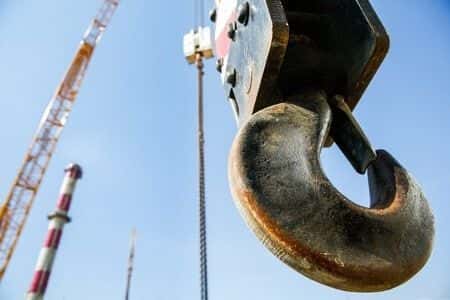Crane Boom Causes Injury to Subcontractor’s Employee
Updated on
This case involves a state agency who owned a piece of property. The agency hired a general contractor for construction activities for a pipe operation. The general contractor retained a company as a subcontractor to construct a slurry wall on the project. An employee of the subcontractor was placing a concrete-lined, 10-foot long “tremie” pipe weighing hundreds of pounds in a rack. While the employee was holding the pipe, a crane operator and another employee jerked the crane’s boom, causing the pipe to go out of control. The employee severely and permanently injured her back and was unable to go back to doing construction work. The crane operator was inexperienced in the “tremie” pipe operation. The general contractor knew that the crane operator had previously had problems controlling pipes before the accident. The contract for the project explicitly stated that the general contractor was responsible for making sure that all subcontractor employees complied with job site safety rules and stated that the general contractor was responsible for the safe performance of work by the subcontractor. The employee sued the general contractor alleging that they were negligent.
Question(s) For Expert Witness
1. Can an employee of a subcontractor sue a general contractor for injuries if the general contractor used an inexperienced employee who caused the injuries and the general contractor was obligated to oversee safety on the project?
Expert Witness Response
![]() In general, the employer of a subcontractor (i.e. a general contractor) is not liable for harm caused to an employee of the subcontractor by an act or omission of any of the general contractor’s employees. This rule was created because the general contractor usually has no right of control over the manner in which the work is done on a construction project. The manner that work is done on a construction project is usually regarded as being under the subcontractor’s control and the subcontractor is usually considered to bear the responsibility for preventing risks of harm to its employees. However, there is an exception to this rule when a general contractor uses a subcontractor and supervises either a whole construction job or its safety aspects. When this is the case, the general contractor is liable for an injury to an employee of the subcontractor if it fails to prevent the subcontractor from working in a way that is reasonably dangerous and knows that the subcontractor’s work is being done in a dangerous way. In this case, the general contractor is probably liable for the employee’s injury because it failed to provide a safe workplace and failed to monitor the subcontractor’s safety even though it was contractually required to do so. Since the general contractor had a duty to ensure that the subcontractor worked in a safe way, it is probably liable for the employee’s injury since it failed to make sure that the crane operator complied with safety rules.
In general, the employer of a subcontractor (i.e. a general contractor) is not liable for harm caused to an employee of the subcontractor by an act or omission of any of the general contractor’s employees. This rule was created because the general contractor usually has no right of control over the manner in which the work is done on a construction project. The manner that work is done on a construction project is usually regarded as being under the subcontractor’s control and the subcontractor is usually considered to bear the responsibility for preventing risks of harm to its employees. However, there is an exception to this rule when a general contractor uses a subcontractor and supervises either a whole construction job or its safety aspects. When this is the case, the general contractor is liable for an injury to an employee of the subcontractor if it fails to prevent the subcontractor from working in a way that is reasonably dangerous and knows that the subcontractor’s work is being done in a dangerous way. In this case, the general contractor is probably liable for the employee’s injury because it failed to provide a safe workplace and failed to monitor the subcontractor’s safety even though it was contractually required to do so. Since the general contractor had a duty to ensure that the subcontractor worked in a safe way, it is probably liable for the employee’s injury since it failed to make sure that the crane operator complied with safety rules.
Subscribe to our newsletter
Join our newsletter to stay up to date on legal news, insights and product updates from Expert Institute.
Sign up nowFind an expert witness near you
What State is your case in?
Subscribe to our newsletter
Join our newsletter to stay up to date on legal news, insights and product updates from Expert Institute.


